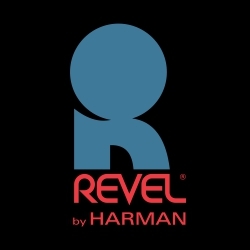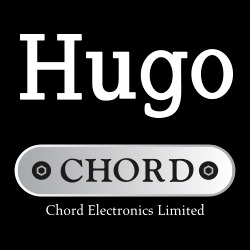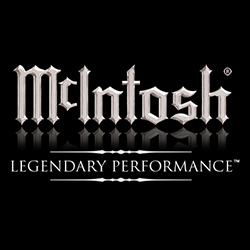Thanks to Beavis – and, indeed, Butthead – the verb ‘to suck’ has become the arch insult. As in: “Prisoner Cell Block H sucks.” While by no means a newly minted qualitative epithet (the term offered a derisory interpretation even during the days when I had hair), the current over-enthusiastic, no-brainer usage does need clarification. There should be degrees of suckiness, just as we have ‘hot’, ‘hotter’ and ‘hottest’. If not, how can we possibly continue to say, for example, that ‘NTSC sucks’? Relative to what? The equally irritating PAL?
Maybe NTSC is the inferior standard, but I’ve just watched a couple of NTSC discs through an ostensibly ‘universal’ PAL TV set, with no line doubler to hand, and I can’t say that the discs’ US origins bothered me. Far more important was the type of format – or are there pro-PAL xenophobes out there who’d take a PAL VHS tape over an NTSC laser disc?
I first saw Charlie Sheen’s salvation, The Chase, on a rented tape and last night on an imported disc, and the Yank slab bettered the former on every count: picture quality, sound, functionality. But then we all know that VHS ‘sucks’ compared to laser disc.
Don’t we?
It’s analogy time, and pay attention before it’s too late…before DVD (or CD-Video or whatever they’re going to call the forthcoming 5in CD-sized Video McDisc) destroys laser discs forever and always. The analogy? VHS tapes are to laser discs what those vile, mass-market embraced audio cassettes were to black vinyl LPs. And DVDs (or Video CDs, etc etc) are to laser discs what CDs are to black vinyl LPs: OK but certainly not better. Think about it: in both cases – DVD and (audio) CD – size, perceived value and convenience have been placed above performance in terms of desirability. And that really sucks.
It’s yet another retrograde step for which the marketing brigade has deftly redefined trivial frills in terms which make them seem more important than the basic function itself. We’re experiencing “Never mind the quality, feel the width” as if it weren’t just a punch-line to a bad music hall joke.
Not that this is new, either: Detroit almost killed off its motor industry in the face of better Japanese offerings because of a policy which stated that ‘longer, lower, wider’ means ‘better’. So now we find laser disc analogous to audio CD in a poignant, end-of-an-era way, frightening as the era is less than 20 years old.
Correct me if I’m wrong, but CD is the last audio format — no, make that the last commercially viable/successful format which uses neither data reduction nor data compression when storing a signal. Sure, digitising itself chops the music up into bits for later reassembly and it ignores whatever falls outside of 20Hz-22kHz, but in essence it’s all there. Laser disc, too, throws nothing away.
The new 5in video formats? Now we’re nearing the realms of fuzzy logic and artificial intelligence and those other SF nightmares where a computer ‘guesses’ what we need. For DVD, it’s what the computer thinks we need to see, from frame to frame.
There’s an old audiophile joke which goes: How many hi-fi reviewers does it take to change a lightbulb? Three: one to change the bulb and two to argue about how much better the old one was. And there’s a grain of truth in it, a pointer to the intrinsic Luddite characteristics of most hobbyists. But they’re there to keep in check the knee-jerk techno-nerds who’ll worship anything that’s new.
Think back to the very first CD players which well and truly sucked. Back then there were half-deaf idiots at every level who adored it. But a year later, they were praising the second generation machines — rhetorically an odd state since they described the previous models as perfect. How do you improve on perfection? We’ll get the same corporate apologists, suck-up hacks and bent dealers doing the same for DVD.
We’re at risk of repeating the (audio) CD fiasco with DVD. Because Philips and Sony did such a terrific selling job (remember the utter, bold-face lies about CDs’ indestructibility?) that any companies which sincerely wanted to make CD work properly had that much a harder time in establishing credibility. After all, how do you tell consumers that your trick D/A converters or jitter busters or separate transports or cables are worth buying when the fundamental CD player has already been sold to them as ‘perfect’?
So we’re soon to be bombarded with adspeak about the virtues of the 5in video discs, and careful reading will show that the claims concentrate on the small size relative to laser discs, the lower prices (again relative to laser discs) and the myriad similarities to the now familiar audio-only CDs, e.g. you can use the same storage racks. What only the liars will claim is that the picture is as good as or better than laser disc.
Then, when the snowball really starts speeding down the mountainside, they’ll wheel out the interactivity features, the similarities to CD-ROM (probably the most overhyped load of toss ever foisted on computer nerds, but that’s better discussed in a computer mag) and anything else that steers the customer away from the issue of picture quality.
Computer processing of raw numerical data is one thing: statistics, numbers, letters – they all do their respective jobs without any additional, subjective aspect. A spread sheet means the same whether it’s written in 10 point type or a Garamond font. The message still comes across with total precision. But process anything where taste and/or subjectivity enters the equation – music, food, visual images, whathaveyou – and invariably something gets lost in the procedure itself.
Unfortunately for DVD, vision is the most impressive of the senses and people all of a sudden become experts: Show a good and a bad TV picture to any group of sighted civilians and they’ll all pick the right one. But play a pair of good speakers and bad ones to the same crowd and you’ll get 60% or more answering ‘Don’t know’.
But maybe this time they’ll be fooled on the visual side. The sheer size of the publicity machine will see to that. And if the wondrous, pleasure-giving 12in laser disc is an immediate victim, then it will, well…suck.
KESSLER BIOGRAPHY
KK has lived longer in the UK than he did in the USA, making him Anglo-American rather than vice versa. University-educated, he dropped out to move to the UK, living in Canterbury ever since. Balding, tetchy and obsessed with Bugatti, the Beatles, Georges Melies films, valve amplifiers, wristwatches, model cars, the Persuasions, Sam & Dave, black olives and tiny cameras, KK shares space with his wife Betty, his son Samuel David (figure it out) and three cats.
(Home Entertainment, October 1995)






















